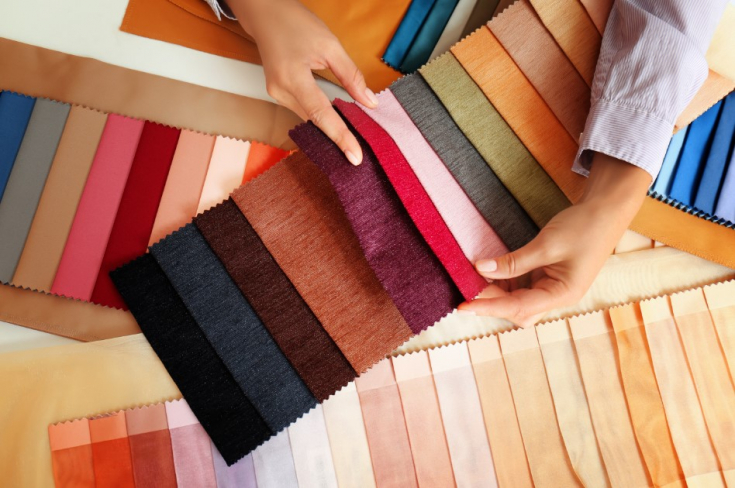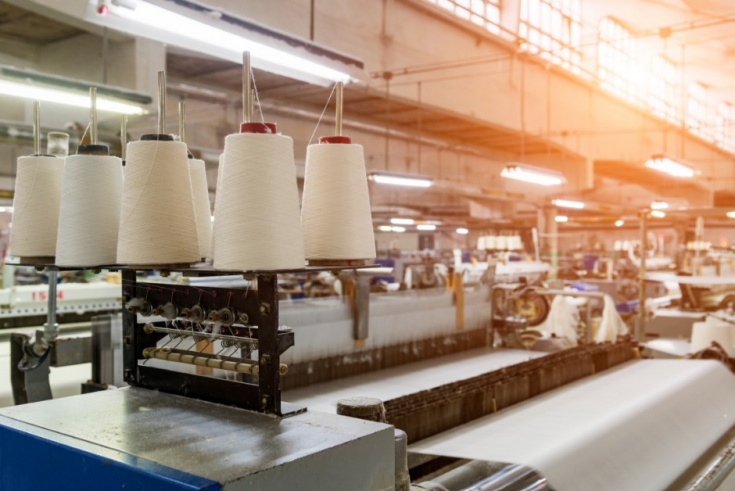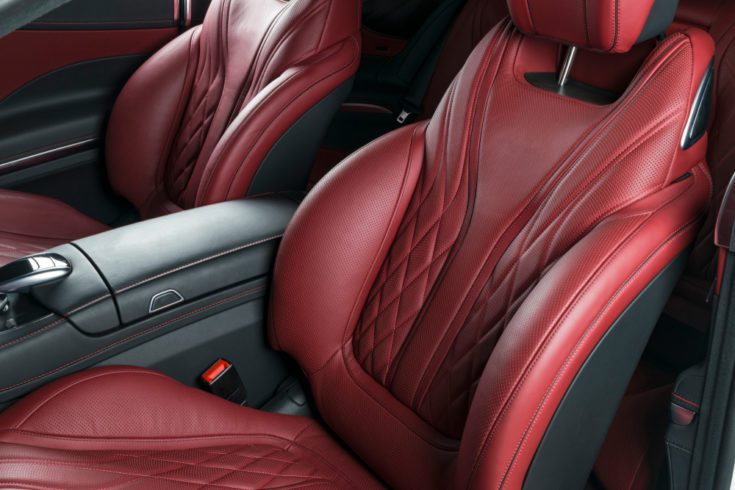Objective measurement
Measures the color standard defined by the design department using a spectrophotometer or uses digitized color data from archives and then displays this color standard on the monitor
Color development is part of every new vehicle model and selecting the colors for a vehicle is not a democratic process. The color is determined by the designer’s subjective perception of color and should apply for 7 years from the start of series production. It typically takes 2 years to go from the initial color concept to the final color specification. Conventional color development utilizes a variety of physical samples from the various manufacturers of interior components. According to BMW, an average of 5 correction procedures must be performed, each taking several weeks, before the final master samples can be generated. This is a time-consuming and costly process, which is characterized by subjective verbal communication between the design department and the component manufacturers, the potential for error is therefore great.
The solution is “Digital Color Management”. In a multi-year project, the BMW Group in Munich and Datacolor AG Europe in Switzerland have demonstrated, using digital color management, that development times of master samples can be reduced by 50%, quality significantly improved in terms of color coordination of the various surfaces, and costs drastically lowered.
Up until that point, the color development process at BMW was based on physical samples. With digital color development, color matching is performed virtually on the manufacturer’s monitor. For a realistic simulation of the combined effect of color and surfaces, corresponding structures are superimposed onto the monitor for visualization. The color information is communicated between the manufacturer and supplier by email in the form of digital reflectance curves. Only at the end of the color matching process are the first physical samples actually produced.


Digital sampling, i.e. digital sample generation, is the name of this state-of-the-art solution. Digital color samples are the basis for a new, fast and economical form of communication in the color development process. A key requirement for the use of this technology is the precise calibration of monitors, as implemented in the color communication system Datacolor ENVISION and the color quality control program Datacolor Tools. This makes it possible, with the help of digital color data, to precisely visualize color variations on a monitor. The calibration algorithm developed by Datacolor should not be confused with the widely used ICC profile. The quality of this calibration is recognized worldwide as a leader. “Exact color reproduction on each calibrated monitor creates a more uniform environment for color evaluation than is possible with visual samples” explains Walter Franz, Global Sales Director Industrial Business Unit, Datacolor. “By implementing the ENVISION technology into our standard quality control software TOOLS 2.0, each partner in the supply chain can now assess the digital color samples on their PCs under exactly the same conditions. The behavior of samples under different types of light (metamerism and color constancy) can of course also be simulated.”
Measures the color standard defined by the design department using a spectrophotometer or uses digitized color data from archives and then displays this color standard on the monitor
Superimposes the colors onto the corresponding surface structures (see Fig. 1 + 2) and modifies, if necessary, the color standards with the Colorslider, a tool for making color adjustments in the color communication system Datacolor Envision (see Fig. 3)
Communicates the color information in the form of digitized reflectance curves (see Fig. 4) to the supplier via e-mail. Each supplier receives the reflectance curve that has been prepared for the product/surface that they are to produce.
Digital color development opens up entirely new perspectives for coordination of the colors of different materials within the supply chains of automotive manufacturers. In particular, as part of a sustainable approach, existing resources – time, logistics, money – are used much more efficiently. During the entire process of color development for the vehicle interior, physical samples are only created at the very end of the process. The automobile manufacturers and their suppliers are therefore provided with a tool that helps them perform their demanding work and save time, resources and money, while still improving the quality of color matching. This is a factor that should not be underestimated in view of the continuously increasing number of series and models and the pressure to bring these onto the market more quickly.
BMW is enjoying time saving amounted to 50% when compared with the previous color development process of master samples. This time saving is mainly due to the fact that the reiterative color development process, based on the time-consuming generation of physical samples, could be significantly reduced. It was possible, at a very early stage of development, to make corrections on a monitor based on digitally transmitted data (recipe suggestions). This also took into account the important issue of metamerism. Verbal, high-risk color communication between suppliers and the design department for the evaluation of physical models has been replaced by an accurate digital color communication process. And thanks to the new digital process, the quality has improved significantly in relation to the color matching of different surface materials.

• Customer Stories •
Success comes in different forms for different clients. Discover more ways Datacolor delivers. See More Stories ›

When data meets color, inspiration meets results.